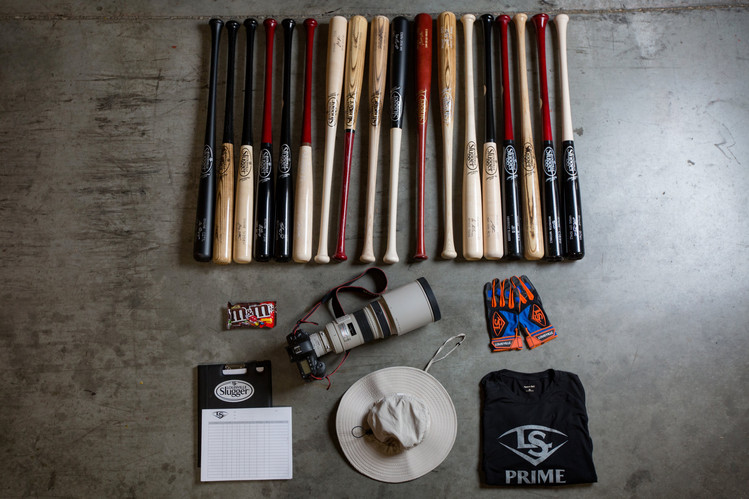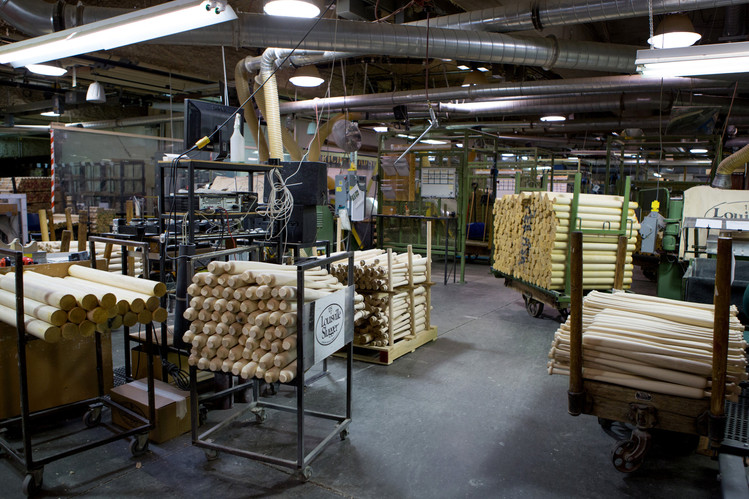WHAT'S IN YOUR BAG?

By HILARY POTKEWITZ
Walking into a Major League Baseball clubhouse, James Sass knows what every player wants from him before anyone utters a word. “They’re all looking for the same thing,” he says. “The biggest barrel they can get with the lightest swing weight.”
Mr. Sass, 50, is head of professional baseball sales for Louisville Slugger. He’s on the road at least once a week visiting clubhouses in the major and minor leagues, checking in with players who use his bats and hoping to convert others. During spring training, he’s away from his Kentucky home for a month.
He carries anywhere from five to 20 bats of different models. “The key is to get samples into their hands, for players to be able to check out different knobs and handles and barrels until they find one that fits them,” Mr. Sass says. Sometimes he carries batting gloves.
The company’s Louisville factory is only about 100 miles from the Great American Ball Park, the home field of the Cincinnati Reds. Mr. Sass often makes the drive on game days to check in with local customers, like Reds All-Star first baseman Joey Votto, or meet with players on the visiting team.
His company travel bag can hold two dozen bats. When he flies, it always goes in checked luggage, even if he’s carrying a custom delivery for a star player like Evan Longoria of the Tampa Bay Rays or Daniel Murphy of the Washington Nationals. “You can’t take bats on planes,” he says.
MLB regulations dictate that bats must be one piece of solid wood, no more than 42 inches long, with a maximum diameter of 2.61 inches. That leaves plenty of room for variation: Some players prefer an end-weighted bat, while others like a balanced bat. Louisville Slugger makes about 6,000 models of wooden bat and offers about a dozen different finishes.
“There is nothing more difficult than hitting a baseball, and these guys are making their livings doing it. They really need to have confidence in the product they’re using when they head to the plate,” he says.
The man speaks from experience. He spent three years in the Milwaukee Brewers’ minor-league system. When his pro career ended, he moved back home to Louisville and started working for Louisville Slugger at 26. He still tests new models himself.
A professional ballplayer typically travels with eight to 12 bats in tow, and Mr. Sass wants his company’s name on as many of those bats as possible.
It used to be an easier sell. For years, the Louisville Slugger was the standard-bearer of American baseball. It was the bat of Babe Ruth, Lou Gehrig and Mickey Mantle. Derek Jeter used the Louisville Slugger model P72 for his entire career; Ken Griffey Jr. used model C271.
In the early 1990s, there were only a handful of companies approved to make bats for Major League Baseball, and at least 60% of MLB players swung Sluggers, according to the company. The number of specialty bat suppliers has since ballooned to more than 30, and Slugger lost market share. The company now estimates that about 35% of Major Leaguers use its bats. (It still claims about 70% of the minor-league market.)
Mr. Sass wears Louisville Slugger shirts when he travels, because he says players have become accustomed to salesmen in the clubhouse and he wants the brand to stand out.
Every morning, he studies the previous days’ batting stats for 125 minor leaguers. It can take a full year of working with a new prospect customizing his bat until a player feels comfortable enough to switch brands, he says.
“You realize the importance of what you’re doing for their career, and there’s a seriousness that comes with that,” he says.
The company’s wooden bats are made of ash, birch or maple, mostly harvested from forests in upstate New York and Pennsylvania. Ash used to be the wood of choice in baseball, but lately maple has become more popular, accounting for 70% of professional orders, he says.
Some pros are quite involved in the bat-making process, and Mr. Sass says he is happy to oblige. From the factory floor, he’ll often take photos of various wood grains and text a player for approval. “With every order, we have a chance to gain loyalty or lose loyalty,” he says.







